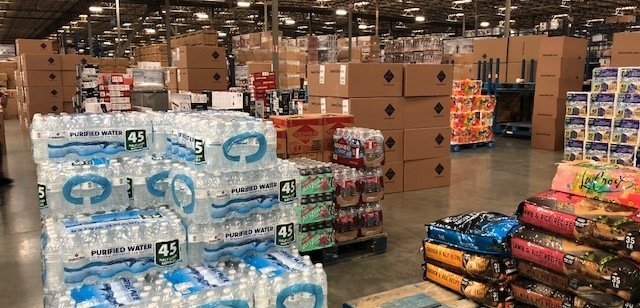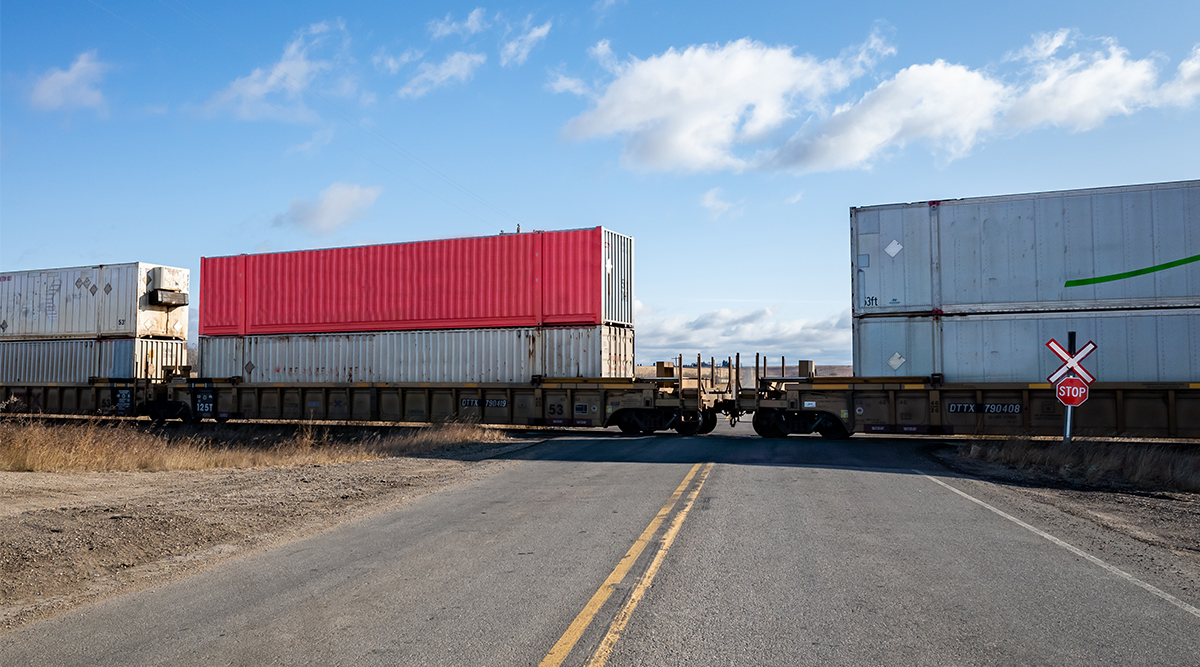Retail Chargebacks Explained: The 7 Common Mistakes Suppliers Make
Time is money, and when suppliers leave retailers waiting for an expected shipment, retailers are within their rights to require compensation. Retail chargebacks are one way retailers protect themselves in the event of a delayed or incorrect delivery, but they can be damaging to suppliers. Here, we’ll cover the what and why of retail chargebacks, as well as common mistakes and how suppliers can avoid them.
- What Are Retail Chargebacks?
- Why Do Retailers Issue Chargebacks?
- Chargeback Risks to Suppliers
- 7 Common Chargeback Mistakes
- How to Avoid Chargebacks
What Are Retail Chargebacks?
In the retail sector, chargebacks are financial penalties for suppliers who do not comply with a retailer’s delivery standards. Common supplier errors that can incur a chargeback include incorrect invoices, shipping delays or damaged products, among others.
Avoiding chargebacks can sometimes be challenging, since every retailer has a different set of standards and requirements. These standards are typically outlined in a retailer’s vendor manual and cover:
- The purchase order process;
- Shipment arrival and placement;
- Packaging and labeling requirements;
- Shipment information formatting;
- And so on.
In short, these standards act as a “how to” guide for working with a specific retailer. It is the supplier’s responsibility to carefully review each retail customer’s standards to ensure they avoid chargeback penalties. The penalties can either be a flat fee or range anywhere from 1%–5% of the gross invoice amount. This may not sound like much, but consider high-volume shipments to big box stores like Walmart or Home Depot — a series of small mistakes could cost a supplier millions of dollars in penalties every year.
While chargeback fees are standard practice for big box retailers, smaller brick-and-mortar businesses have adopted the practice to protect themselves from lost revenue. This incentivizes suppliers to deliver the same attention to detail to every retailer they serve, or risk paying hefty fines, damaging their reputation and losing customers.
Why Do Retailers Issue Chargebacks?
When a supplier does not deliver on a retailer’s expectations, retailers may be unable to sell the goods in question. They may need to spend extra time and resources getting the product ready to sell, or they may need to wait while the supplier corrects the error. This delay causes the retailer to lose revenue and potentially inconvenience customers who are waiting on a certain product.
For example, if a product arrives with an incorrect SKU or barcode on the label, the retailer must delay placing the product on shelves while staff create and apply new labels to each unit. This mitigation effort costs the retailer time, money and sales. Chargebacks, therefore, are the retailer’s insurance against any additional costs or losses incurred while fixing a supplier’s mistake.
Chargeback Risks to Suppliers
If a supplier has a particularly large volume of retail customers, a handful of chargeback fees per year is inevitable. However, suppliers must be careful not to incur too many penalties, since the consequences can snowball quickly. Suppliers with a track record of non-compliance risk the following:
- Losing future opportunities with high-volume customers
- Losing business to competitors
- Damaged industry reputation
- Mounting financial penalties
- Potential debts to retailers
For context, retailers can charge suppliers anywhere from $50–$100 per shipment for infractions such as not using their specified freight carrier, early or late deliveries, missing or incorrect shipping labels and invoice mistakes.
Suppliers should also be aware that some retailers tend to capitalize on chargeback penalties as an extra source of revenue. Though it may seem unethical, the retailer’s standards are ultimately there to protect them, and suppliers must consider them law.
7 Common Chargeback Mistakes
Some reasons for chargeback penalties are straightforward — late deliveries, damaged packaging or product and so on. Others are less obvious, not to mention each retailer will have a unique set of stipulations. Below are seven of the most common chargeback mistakes suppliers make.
1. Damaged packaging or product
This is one of the most obvious mistakes to incur chargeback fees. Retailers pay for and expect products to arrive in perfect condition so they can be placed on the shelves as soon as possible. Damages to the packaging or product itself causes delays and disappointed customers.
2. Labeling mistakes
Like damaged packaging, incorrect labels take time to correct. Label mistakes can include missing, defective or inaccurate bar codes, incorrect label application or labels placed on the wrong products.
3. Early or late shipping arrivals
Suppliers typically guarantee a delivery date, or at least a delivery window. Retailers plan their stocking schedules around deliveries, so if a shipment arrives earlier or later than the stated window, the retailer must adjust their schedule, which may involve reassigning staff and throwing off other day-to-day operations.
4. Incorrect or insufficient product
Retailers submit purchase orders for a specific volume of product depending on customer demand or available inventory space. A delivery containing any more or less than they ordered — or a different product altogether — disrupts the retailer’s processes and revenue stream. If the supplier does not have sufficient product to fill the retailer’s order, the supplier must communicate this as soon as possible so the retailer can adjust their plans.
5. Invoice and ASN errors
These documents (which are often digital) reflect shipment contents, pricing, purchase date, projected delivery date and other information pertinent to the retailer. Any mistakes or omissions on either the advance shipping notice (ASN) or the final invoice can cause schedule disruptions and lead to miscommunication. Likewise, sending a shipment without an ASN is also an infraction.
6. Incorrect shipping provider
Retailers will often stipulate which shipping provider(s) they prefer, whether for their pricing, punctuality or frequency of visits. Using a carrier outside a retailer’s preferences can result in a chargeback fee.
7. Incorrect shipping location
This happens more than one might expect during fulfillment. This error presents a clear and costly inconvenience to the retailer, so suppliers should triple-check all purchase documentation.
How to Avoid Chargebacks
Besides avoiding hefty fines, suppliers are wise to stay on top of retailer standards in order to maintain good buyer relationships and maximize sales. If a supplier does encounter a chargeback — which is more likely with high-volume customers — they should use it as an opportunity to improve their operations.
It’s also a good idea to know how to fight chargebacks, since retailers can make mistakes, and some may even abuse their chargeback abilities. If a supplier can prove that there is no non-compliance with the retailer’s terms, the retailer must dismiss the charge. This is where comprehensive documentation on both sides is crucial.
Follow these five best practices to avoid chargeback fees.
1. Know the standards and requirements
Every retailer’s vendor manual and shipping requirements should be made clear and readily available to all suppliers. Both parties must understand each other’s terms to avoid miscommunication or unexpected infractions. For suppliers, this responsibility often falls to the customer relationship management or compliance teams.
2. Implement appropriate processes and procedures
Digital tools and systems, including electronic data interchange (EDI), were created to minimize the risk of human error and streamline communications between shippers and receivers. Auditing programs with proprietary rules engines can ensure all steps are taken during the fulfillment process, from driver data to checkpoint confirmations to product condition documentation.
Even with these powerful digital tools at their disposal, clear, detailed and multi-format documentation is the supplier’s best protection against unexpected chargebacks. Suppliers can even create their own manuals and optimize their processes to ensure compliance with retailers’ standards, which a shipping partner such as a third-party logistics (3PL) provider can assist with.
3. Test systems before delivery
Technology is not infallible, so it’s imperative to test all digital systems before initiating fulfillment. Make sure all contact info and formatting is correct and compatible with the retailer’s OS on documents like purchase orders, invoices and ASNs, and test any auditing software before using it on customers’ orders.
4. Confirm all details — then confirm again
Once you’re ready to ship, cross-check and verify label contents, label placement, delivery location, shipping carrier, stated delivery window and other details as stated in the retailer’s standards. Create a method for auditing and updating the verification process so no detail goes unchecked.
5. Analyze historical data
If you’re a supplier who experiences frequent chargebacks, examine your past documentation to see where you may have missed something. This may be tedious and time-consuming, but if you calculate the impact of repeated chargebacks on your bottom line, it will be worth it to identify the source of a chronic problem.
In addition to all the steps involved in supply chain logistics, verifying compliance with every retailer may be a heavy lift for suppliers. This is why many suppliers choose to outsource this task to a 3PL provider or other warehousing and fulfillment company with EDI expertise.
If this sounds like a viable option for your company, prioritize 3PL providers that:
- Have experience reviewing standards and requirements in great detail
- Understand compliance regulations across industries, retailers and geographic borders
- Understand your industry and its unique fulfillment requirements
- Have good relationships with retailers in your industry
A 3PL partner with the qualities above can make the delivery process easier for both the retailer and supplier, including reducing the risk of chargebacks and other fulfillment issues. As a leading 3PL provider with experience across industries, we at Legacy Supply Chain pride ourselves on maintaining complete compliance with standards across the board.
Contact us today to learn how Legacy helps suppliers and retailers alike achieve a smooth and error-free fulfillment process.
-
Tariff Update: Where things are heading next
The buzz around tariffs has settled down over the last few weeks. Progress is being made in many areas, so the purpose of today’s post is...
+ Read more -
Successful 3PL-Customer Relationship – 6 Cornerstones
Hiring a third-party logistics (3PL) provider is a strategic approach for businesses to increase their capacity without expanding their...
+ Read more -
Canadian Rail Strike? – What We Know So Far
On May 1st, CN (Canadian National Railway) and CPKC (Canadian Pacific Kansas City) rail workers voted overwhelmingly to authorize a strike...
+ Read more





